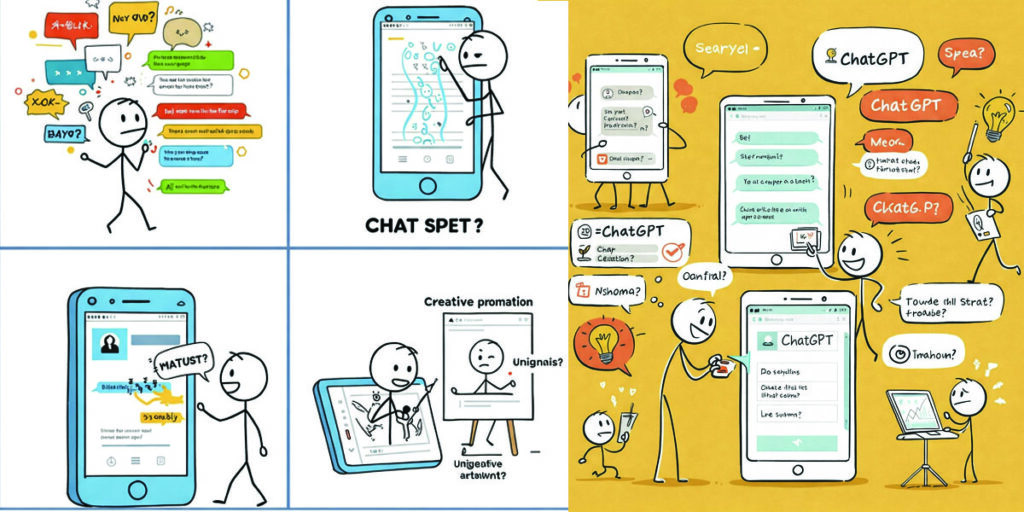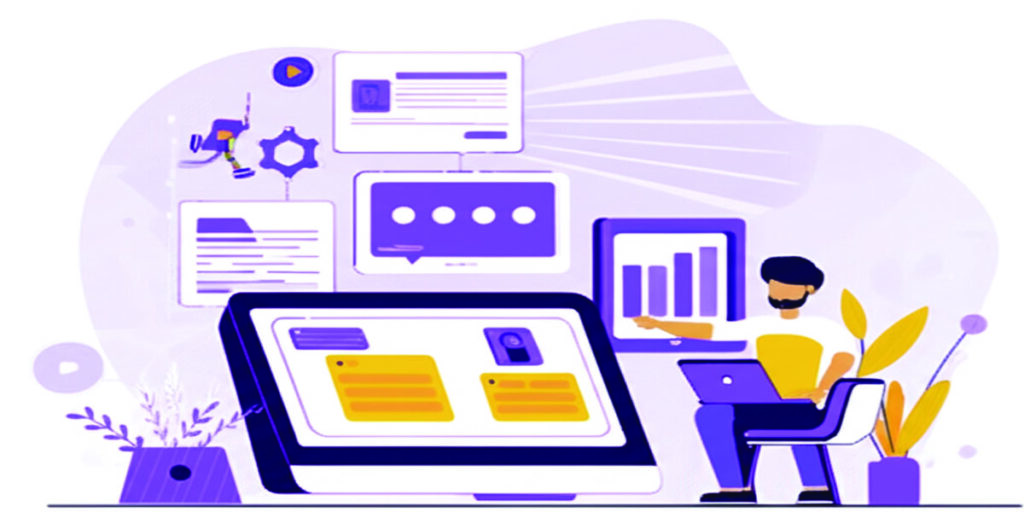AI code completion tool for developers, supports multiple languages and IDEs.
In the ever-evolving landscape of software development, efficiency and productivity are paramount. Developers constantly seek tools1 and methodologies to streamline their workflows, reduce errors, and accelerate the creation of robust and scalable applications. Among the recent innovations that have garnered significant attention is Tabnine, an AI-powered code completion tool designed to assist developers in writing code faster, smarter, and with greater accuracy. This article delves into the history of code completion, the economic market surrounding developer tools, the networking aspects that have contributed to Tabnine’s growth, and provides a comprehensive overview of its features, supported languages and IDEs, and its impact on the software development industry.
The Historical Context of Code Completion:
The concept of code completion is not new. Early Integrated Development Environments (IDEs) introduced basic forms of autocompletion, primarily relying on static analysis and keyword recognition. These rudimentary features offered suggestions based on the syntax of the programming language and the identifiers already present in the current scope. While helpful for reducing typos and remembering function names, these early implementations lacked the intelligence to understand the semantic context and predict more complex code structures.
The late 20th and early 21st centuries witnessed advancements in IDEs, leading to more sophisticated code completion features. Techniques like template expansion, where predefined code snippets could be inserted and customized, and context-aware suggestions based on type hinting and documentation became increasingly common. However, these improvements still largely relied on predefined rules and patterns.
The advent of machine learning and, more specifically, deep learning in the past decade has ushered in a new era of intelligent code completion. By training on vast datasets of code from open-source repositories and other sources, AI models can learn complex patterns, understand the nuances of different programming languages, and predict the next lines or even entire blocks of code with remarkable accuracy. Tabnine stands at the forefront of this AI-driven revolution in code completion.
The Economic Market for Developer Tools:
The market for developer tools is a significant and growing segment of the software industry. As the demand for software continues to surge across various sectors, the need for efficient and effective tools that empower developers has also increased. This market encompasses a wide range of products, including IDEs, debuggers, version control systems, testing frameworks, deployment tools, and increasingly, AI-powered assistants like Tabnine.
Several factors drive the economic growth of this market:
- Increased Software Demand: The digital transformation across industries necessitates the development of more and more software applications, fueling the demand for tools that enhance developer productivity.
- Complexity of Modern Software Development: Contemporary software projects often involve intricate architectures, multiple programming languages, and complex dependencies, making efficient tools indispensable.
- Focus on Developer Productivity: Organizations recognize that improving developer productivity directly translates to faster time-to-market, reduced development costs, and higher quality software.
- Rise of Specialized Tools: Developers are increasingly adopting specialized tools that cater to specific needs, such as AI-powered code completion for enhanced coding efficiency.
- Cloud-Based Solutions: The shift towards cloud-based development environments and tools has created new opportunities for vendors to offer subscription-based services, contributing to market growth.
In this competitive landscape, Tabnine has carved a niche by offering a compelling value proposition: significantly accelerating the coding process and reducing the cognitive load on developers. Its AI-powered capabilities differentiate it from traditional code completion tools, making it an attractive investment for individual developers and development teams alike. The freemium model adopted by Tabnine, offering a free tier with basic functionalities and paid tiers with more advanced features and privacy options, allows it to cater to a broad range of users and organizations.
The economic success of tools like Tabnine also has a ripple effect, contributing to the overall growth of the software industry by enabling developers to build more software in less time, fostering innovation and driving further technological advancements. Venture capital investment in AI-powered developer tools is also on the rise, indicating strong confidence in the future growth of this market segment.
Networking and the Growth of Tabnine:
The growth and adoption of Tabnine can be attributed, in part, to effective networking strategies and the power of community. In the software development world, word-of-mouth, online communities, and developer networks play a crucial role in the discovery and adoption of new tools.
- Open Source Contributions and Community Engagement: By training its models on vast amounts of open-source code, Tabnine indirectly benefits from the collaborative nature of the open-source community. Furthermore, engaging with developer communities through forums, social media, and developer conferences allows Tabnine to gather feedback, understand user needs, and build brand awareness.
- Integration with Popular IDEs: Tabnine’s seamless integration with a wide range of popular IDEs, such as VS Code, IntelliJ IDEA, PyCharm, and others, has been a key factor in its widespread adoption. By meeting developers where they already work, Tabnine lowers the barrier to entry and makes it easy for them to incorporate the tool into their existing workflows.
- Partnerships and Collaborations: Strategic partnerships with other companies in the developer ecosystem can also contribute to Tabnine’s growth. Collaborations with IDE vendors, cloud platform providers, or other developer tool companies can expand Tabnine’s reach and integrate its capabilities into broader development workflows.
- Referral Programs and Network Effects: Offering referral programs can incentivize existing users to spread the word about Tabnine, leveraging their networks to attract new users. As more developers adopt Tabnine, the tool becomes more valuable due to the network effect – the more people use it, the more data it has to learn from, leading to more accurate and relevant suggestions.
- Content Marketing and Thought Leadership: Creating valuable content, such as blog posts, tutorials, and webinars, that showcases the benefits of AI-powered code completion and positions Tabnine as a leader in this space can attract developers seeking solutions to improve their productivity.
The combination of these networking strategies has helped Tabnine build a strong user base and establish itself as a prominent player in the AI-powered code completion market.
Tabnine: Features and Functionality:
Tabnine leverages deep learning models trained on a massive dataset of code to provide intelligent and context-aware code completions. Its core features include:
- Line-of-Code Completion: Tabnine predicts and suggests the next line of code as the developer types, significantly reducing the amount of manual typing required.
- Full Function Completion: In many cases, Tabnine can suggest entire functions or code blocks based on the context of the code being written.
- Natural Language to Code: Some advanced versions of Tabnine allow developers to describe their intent in natural language, and the tool will generate the corresponding code snippets.
- Contextual Awareness: Tabnine understands the semantic context of the code, including variable names, function definitions, and the overall project structure, leading to more relevant and accurate suggestions.
- Personalized Suggestions: Tabnine can learn from a developer’s coding style and project-specific codebases (in paid versions with privacy options), providing more tailored and relevant suggestions over time.
- Reduced Errors: By suggesting syntactically correct and semantically relevant code, Tabnine helps developers avoid common errors and typos.
- Faster Learning of New Languages and Frameworks: Tabnine can assist developers in learning new programming languages and frameworks by providing relevant code examples and suggesting common patterns.
- Cloud and Local Models: Tabnine offers both cloud-based models for general-purpose code completion and local models (in paid versions) that can be trained on private codebases, ensuring data privacy and security.
Supported Languages and IDEs:
Tabnine boasts broad compatibility with a wide range of programming languages and popular IDEs, making it accessible to a large number of developers.
Supported Programming Languages:
Tabnine supports a vast array of programming languages, including but not limited to:
- General-Purpose Languages: Python, JavaScript, Java, C++, C#, Go, Ruby, PHP, Swift, Kotlin, Rust.
- Web Development Languages: HTML, CSS, TypeScript, JSX.
- Data Science Languages: R, SQL.
- Scripting Languages: Bash, Shell.
- Other Languages: Objective-C, Scala, Groovy, Perl, Lua, Dart, Elixir, Julia, Haskell, F#, and many more.
This extensive language support ensures that developers working in diverse technological stacks can benefit from Tabnine’s AI-powered assistance.
Supported Integrated Development Environments (IDEs):
Tabnine seamlessly integrates with many of the most popular IDEs and code editors, including:
- JetBrains IDEs: IntelliJ IDEA, PyCharm, WebStorm, GoLand, PhpStorm, Rider, RubyMine, AppCode, CLion.
- Microsoft Visual Studio: Visual Studio (Windows and Mac).
- Visual Studio Code (VS Code): A widely used and highly extensible code editor.
- Other Editors: Sublime Text, Atom, Emacs.
The wide IDE support ensures that developers can easily incorporate Tabnine into their preferred development environment without significant workflow disruptions. The installation process is typically straightforward, often involving installing a plugin or extension from the IDE’s marketplace.
Impact on the Software Development Industry:
Tabnine and other AI-powered code completion tools are having a significant impact on the software development industry in several ways:
- Increased Developer Productivity: By automating repetitive coding tasks and providing intelligent suggestions, Tabnine allows developers to write code faster and focus on more complex problem-solving. Studies and user testimonials often highlight significant time savings in coding tasks.
- Improved Code Quality: Tabnine’s ability to understand context and suggest syntactically correct and semantically relevant code helps reduce errors and improve the overall quality of the codebase.
- Reduced Cognitive Load: By predicting and suggesting code, Tabnine reduces the mental effort required to recall syntax, function names, and common code patterns, freeing up developers’ cognitive resources for more critical aspects of software design and architecture.
- Faster Onboarding for New Developers: AI-powered code completion can assist new developers in learning the syntax and common patterns of a programming language or a project’s codebase more quickly.
- Democratization of Coding: By making coding more accessible and efficient, tools like Tabnine can potentially lower the barrier to entry for aspiring developers.
- Shift in Development Focus: As AI handles more routine coding tasks, developers can increasingly focus on higher-level concerns such as system design, user experience, and business logic.
- Potential for Code Generation: The advancements in AI-powered code completion are paving the way for more sophisticated code generation tools that could potentially automate the creation of larger portions of software applications.
However, it’s also important to acknowledge potential challenges and considerations:
- Over-Reliance on AI: Developers need to maintain a strong understanding of the underlying programming principles and avoid becoming overly reliant on AI suggestions, which could hinder their learning and problem-solving skills in situations where AI assistance is not available or accurate.
- Data Privacy and Security: For organizations using private codebases, ensuring the privacy and security of their data when using AI-powered tools is crucial. Tabnine addresses this with its local model options in paid tiers.
- Bias in Training Data: AI models are trained on existing code, which may contain biases or reflect suboptimal coding practices. It’s important for developers to critically evaluate AI suggestions and ensure they align with best practices and project standards.
- Cost Considerations: While free tiers are available, the more advanced features and privacy options of AI-powered code completion tools often come with a cost, which development teams need to factor into their budgets.
Tabnine represents a significant step forward in the evolution of developer tools. By leveraging the power of artificial intelligence, it provides a level of code completion that goes beyond traditional static analysis, offering context-aware, intelligent, and personalized suggestions that can dramatically enhance developer productivity and code quality. Its broad language and IDE support, coupled with effective networking and a growing economic market for developer productivity tools, has positioned Tabnine as a leading solution in the AI-powered code completion space.
As AI continues to evolve, tools like Tabnine are likely to become even more sophisticated, further transforming the software development workflow. While it’s crucial for developers to maintain a strong foundation in programming principles, the assistance provided by AI-powered tools offers a valuable opportunity to streamline development processes, reduce errors, and ultimately build better software faster. The history of code completion has progressed from simple keyword suggestions to the sophisticated AI-driven predictions of today, and Tabnine is undoubtedly playing a key role in shaping the future of how software is created. Its impact on the economic market for developer tools and its growth through effective networking highlight its significance in the modern software development ecosystem.




















